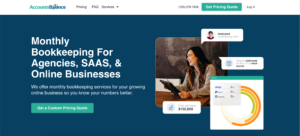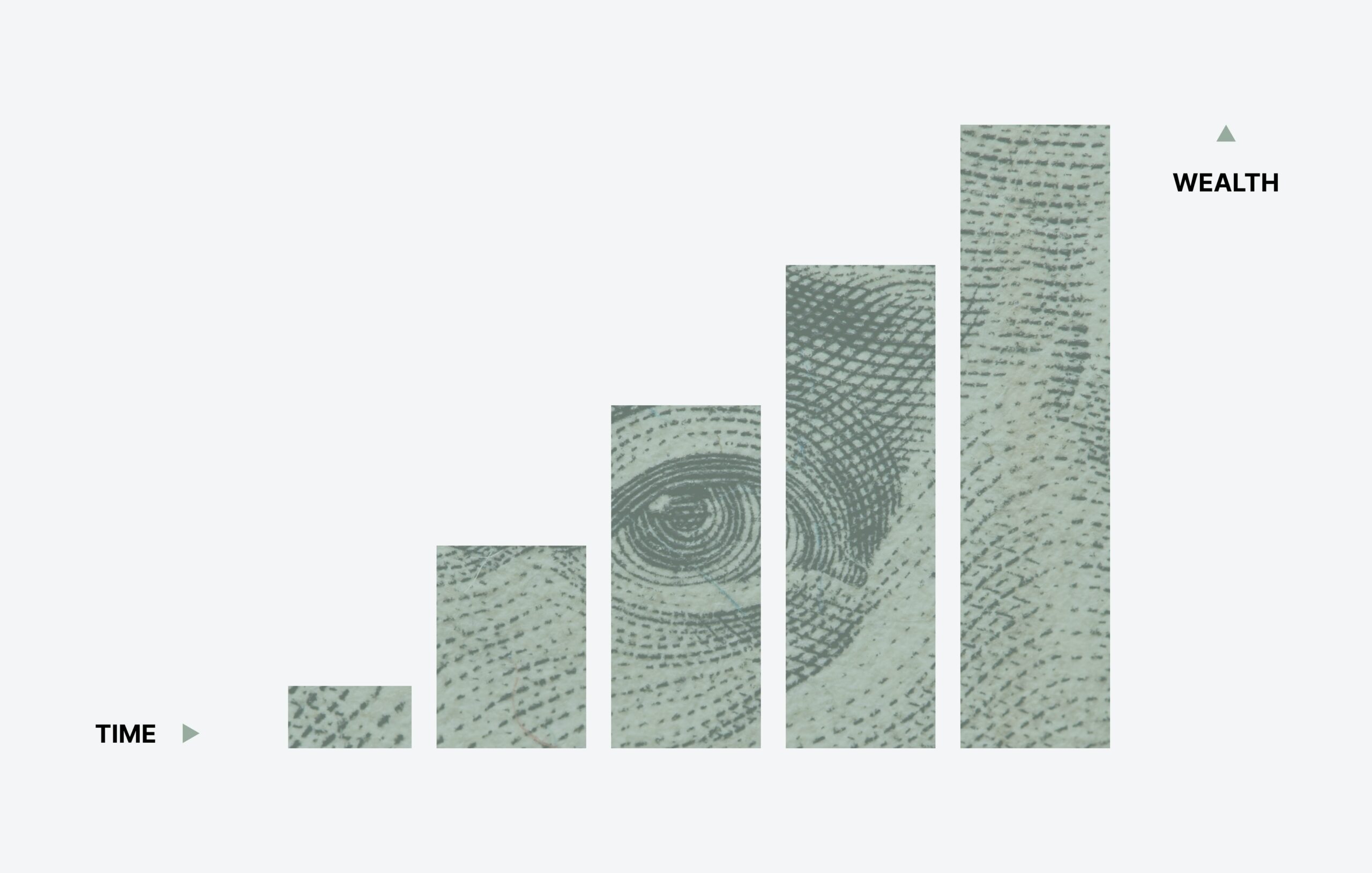
Wondering how to value your SAAS business?
There’s 3 popular ways that we’ll cover in this article.
My name is Connor Gillivan. I’ve been an Entrepreneur for the past 10+ years, have built 4+ companies to 6, 7, and 8 figures with an exit in 2019.
In this article, we’ll break down everything you need to know about SAAS valuations.
Here’s what we’ll cover:
- What Factors Go Into Valuing a SAAS Business?
- SAAS Valuation Method #1: EBITDA
- SAAS Valuation Method #2: SDE (Seller’s Discretionary Earnings)
- SAAS Valuation Method #3: Revenue Multiple
- SAAS Valuation FAQs
- Where Can You Sell Your SAAS Business?
- Final Tips When Valuing a SAAS Business
What Factors Go Into Valuing a SAAS Business?
If you’re considering selling your SAAS company, it’s important to understand the factors that go into valuing a SAAS business.
Here are some of the key factors that go into valuing a SAAS business:
- SaaS Net Income: Your net income is the profit your company generates after all expenses have been deducted. This is an important metric that buyers will consider when valuing your business.
- SaaS Gross Margin: Your gross margin is the percentage of revenue that you keep after deducting the cost of goods sold. High gross margins are typically viewed positively by buyers.
- SaaS Revenue Growth Rate: Your revenue growth rate is the percentage increase in revenue over a specific period of time. Buyers will look for consistent and healthy revenue growth rates when valuing your business.
- SaaS Churn Rate: Your churn rate is the percentage of customers who cancel their subscriptions over a given period of time. Low churn rates are viewed positively by buyers and can increase the valuation of your business.
- SaaS Customer Lifetime Value (CLTV): Your CLTV is the amount of money a customer is expected to spend on your product during their lifetime as a customer. A higher CLTV can increase the valuation of your business.
- SaaS Customer Acquisition Cost (CAC): Your CAC is the cost of acquiring a new customer. Low CACs are viewed positively by buyers and can increase the valuation of your business.
- SaaS Financial Metrics: Other important financial metrics that buyers will consider include your monthly recurring revenue (MRR), annual recurring revenue (ARR), and EBITDA (Earnings Before Interest, Taxes, Depreciation, and Amortization).
Valuing a SAAS business requires a deep understanding of these factors and how they interact with each other. There are various SaaS valuation methods, including SaaS revenue multiples, SaaS EBITDA multiples, and SaaS gross margin multiples, that can be used to value your business. It’s important to work with experienced professionals to determine the most appropriate valuation method for your specific business.
SAAS Valuation Method #1: EBITDA
When it comes to valuing a SAAS business, one popular method is using EBITDA (Earnings Before Interest, Taxes, Depreciation, and Amortization) multiples.
EBITDA multiples are commonly used in the technology industry to value companies because they provide a clear picture of a company’s financial performance without being influenced by non-operating expenses or capital investments.
Here’s how the EBITDA valuation method works:
- Calculate your company’s EBITDA: Start by calculating your company’s EBITDA. This is done by taking your net income and adding back interest, taxes, depreciation, and amortization.
- Determine the EBITDA multiple: Once you have your EBITDA, you need to determine the EBITDA multiple that will be used to value your company. This multiple will depend on a variety of factors, such as your company’s growth rate, market trends, and industry benchmarks.
- Multiply your EBITDA by the EBITDA multiple: Finally, you’ll need to multiply your EBITDA by the EBITDA multiple to arrive at a valuation for your company.
For example, let’s say your SAAS business has an EBITDA of $1 million and the EBITDA multiple for your industry is 5x. This would result in a valuation of $5 million ($1 million x 5).
Keep in mind that EBITDA multiples can vary widely depending on the company, industry, and market conditions. Additionally, EBITDA multiples do not take into account factors such as revenue growth rates or customer acquisition costs. Therefore, it’s important to use EBITDA multiples in conjunction with other valuation methods to arrive at a more accurate valuation for your SAAS business.
SAAS Valuation Method #2: SDE (Seller’s Discretionary Earnings)

Another popular method for valuing a SAAS business is using the Seller’s Discretionary Earnings (SDE) multiple. SDE takes into account the earnings of the business owner as well as the company’s profits.
Here’s how the SDE valuation method works:
- Calculate your company’s SDE: Start by calculating your company’s SDE. This is done by taking your net income and adding back any owner salary, benefits, and other discretionary expenses.
- Determine the SDE multiple: Once you have your SDE, you need to determine the SDE multiple that will be used to value your company. This multiple will depend on a variety of factors, such as your company’s growth rate, market trends, and industry benchmarks.
- Multiply your SDE by the SDE multiple: Finally, you’ll need to multiply your SDE by the SDE multiple to arrive at a valuation for your company.
For example, let’s say your SAAS business has an SDE of $500,000 and the SDE multiple for your industry is 3x. This would result in a valuation of $1.5 million ($500,000 x 3).
Like with EBITDA, keep in mind that SDE multiples can vary widely depending on the company, industry, and market conditions. Additionally, SDE multiples do not take into account factors such as revenue growth rates or customer acquisition costs. Therefore, it’s important to use SDE multiples in conjunction with other valuation methods to arrive at a more accurate valuation for your SAAS business.
SAAS Valuation Method #3: Revenue Multiple
The revenue multiple is another common valuation method used for SAAS businesses. As the name suggests, this method values a company based on its revenue.
Here’s how the revenue multiple valuation method works:
- Calculate your company’s revenue: Start by calculating your company’s revenue for the past trailing twelve months. This is done by adding up all of your sales over a certain period of time (such as a year).
- Determine the revenue multiple: Once you have your revenue, you need to determine the revenue multiple that will be used to value your company. This multiple will depend on a variety of factors, such as your company’s growth rate, market trends, and industry benchmarks.
- Multiply your revenue by the revenue multiple: Finally, you’ll need to multiply your revenue by the revenue multiple to arrive at a valuation for your company.
For example, let’s say your SAAS business has annual revenue of $2 million and the revenue multiple for your industry is 4x. This would result in a valuation of $8 million ($2 million x 4).
The revenue multiple method is straightforward and easy to understand. However, it does have its limitations. Revenue multiples don’t take into account factors such as profitability or growth rates. Additionally, SAAS businesses with high customer acquisition costs and low customer lifetime values may not be valued as highly using this method.
SAAS Valuation FAQs

1. What are typical valuation multiples for SAAS?
Valuation multiples for SAAS businesses can vary widely depending on factors such as the company’s growth rate, profitability, and market conditions. However, some common valuation multiples for SAAS businesses include EBITDA multiples between 4x to 20x, revenue multiples between 2x to 8x, and SDE multiples between 2x to 4x. Ultimately, it will come down to other factors involved in how you’ve built and run your SAAS business as well.
2. What is an example of a SAAS valuation?
Let’s say a SAAS business has an annual revenue of $3 million and a net income of $1 million. Based on industry benchmarks and market conditions, the business is expected to grow at a rate of 20% per year for the next five years.
Using the EBITDA multiple method, the business might be valued at around 8x EBITDA, resulting in a valuation of $8 million ($1 million x 8). Alternatively, using the revenue multiple method, the business might be valued at around 4x revenue, resulting in a valuation of $12 million ($3 million x 4).
However, it’s important to note that these are just hypothetical examples, and the actual valuation of a SAAS business will depend on a variety of factors unique to that business. It’s always best to work with a qualified business broker or advisor to determine an accurate valuation.
3. What is a healthy EBITDA margin for SAAS?
A healthy EBITDA margin for SAAS businesses can vary depending on a variety of factors such as the company’s stage, industry, and growth rate. However, in general, a healthy EBITDA margin for SAAS businesses is typically between 20% to 40%. A higher EBITDA margin generally indicates that a company is generating strong profits relative to its revenue, which can be a positive signal to potential buyers or investors. However, it’s important to keep in mind that EBITDA margin alone is not a comprehensive measure of a SAAS business’s financial health and should be considered in conjunction with other financial metrics such as revenue growth rate, customer acquisition cost, and customer lifetime value.
4. Why are SAAS valuations so high?
SAAS valuations tend to be high due to a variety of factors unique to the SAAS business model. Firstly, SAAS businesses often benefit from recurring revenue streams, which can provide greater revenue predictability and stability compared to businesses with one-time sales. Additionally, many SAAS businesses have high gross margins due to low marginal costs associated with serving additional customers. Furthermore, SAAS businesses can often scale quickly and relatively easily, which can be attractive to investors looking for high-growth opportunities. Finally, the software industry as a whole has experienced strong growth in recent years, which has further driven up valuations for SAAS businesses.
Where Can You Sell Your SAAS Business?

There’s lots of websites and brokers online now where you can easily sell your SAAS business and get it in front of thousands of potential buyers.
It’s important to consider your options and talk to multiple brokers so you can choose the best for your business.
Here are 5 options from our experience in the industry:
- Empire Flippers – Empire Flippers is a marketplace for buying and selling online businesses, including SAAS businesses. They offer a free valuation tool and a team of experienced brokers to help sellers through the process.
- FE International – FE International is a leading M&A advisor in the technology industry, specializing in the sale of SAAS businesses. They have a large network of qualified buyers and offer personalized guidance throughout the sale process.
- Quiet Light Brokerage – Quiet Light Brokerage is a brokerage firm that specializes in the sale of small and mid-sized online businesses, including SAAS businesses. They offer a team of experienced brokers and a streamlined process to ensure a smooth transaction.
- Flippa – Flippa is a popular online marketplace for buying and selling websites and online businesses, including SAAS businesses. They offer a range of selling options, from do-it-yourself listings to fully managed sales, and have a large user base of potential buyers.
- BizBuySell – BizBuySell is a leading online marketplace for buying and selling businesses of all types, including SAAS businesses. They have a large network of buyers and sellers and offer a variety of resources to help sellers prepare for and navigate the sale process.
Final Tips When Valuing a SAAS Business
As you think about selling your SAAS business, here’s 5 final tips to keep in mind:
- Focus on recurring revenue: Recurring revenue is a key driver of SAAS valuations, so make sure to highlight your business’s recurring revenue streams and emphasize the stability and predictability of your revenue.
- Consider all financial metrics: When valuing your SAAS business, it’s important to consider a range of financial metrics, including gross margin, net income, revenue growth rate, churn rate, customer lifetime value, and customer acquisition cost.
- Understand your market: SAAS businesses are often valued based on comparisons to other businesses in their industry or market, so make sure to do your research and understand how your business compares to others in terms of size, growth potential, and other key factors.
- Look beyond the numbers: While financial metrics are important, they don’t tell the whole story of a SAAS business. Be prepared to highlight other factors that make your business attractive to potential buyers, such as a strong team, unique technology or intellectual property, or a large and engaged user base.
- Get professional help: Valuing and selling a SAAS business can be complex, so consider hiring a professional to help you navigate the process. This could include a business broker, M&A advisor, or other professional with experience in valuing and selling SAAS businesses.
What Is AccountsBalance?

AccountsBalance is a monthly bookkeeping service specialized for agencies & SAAS companies.
We take monthly bookkeeping off your plate and deliver you your financial statements by the 15th or 20th of each month.
You’ll have your Profit and Loss Statement, Balance Sheet, and Cash Flow Statement ready for analysis each month so you and your business partners can make better business decisions.
Interested in learning more? Schedule a call with our CEO, Nathan Hirsch.
And here’s some free resources:
In Summary
Valuing your SAAS business isn’t an easy task, but there are ways to do it that are industry standard.
As we outlined, rely on:
- EBITDA multiples
- Seller’s Discretionary Earnings
- Revenue multiples
If you still have questions about SAAS valuations or you’d like to be introduced to a SAAS broker, reach out to us at [email protected].
Best of luck!









